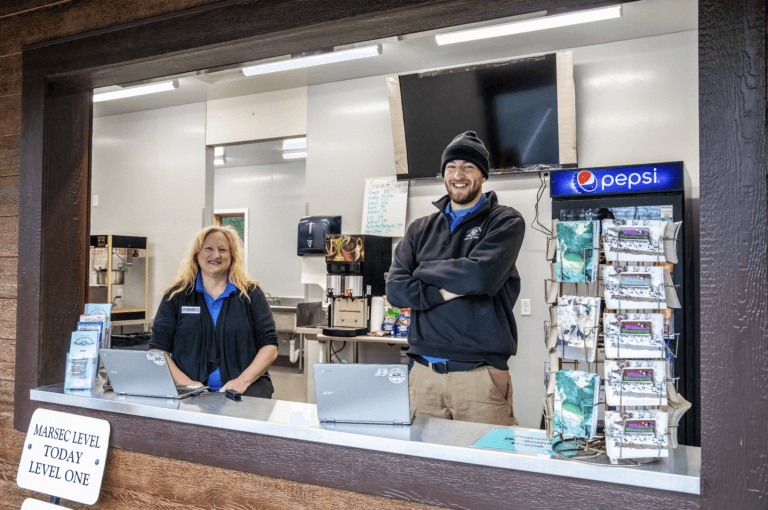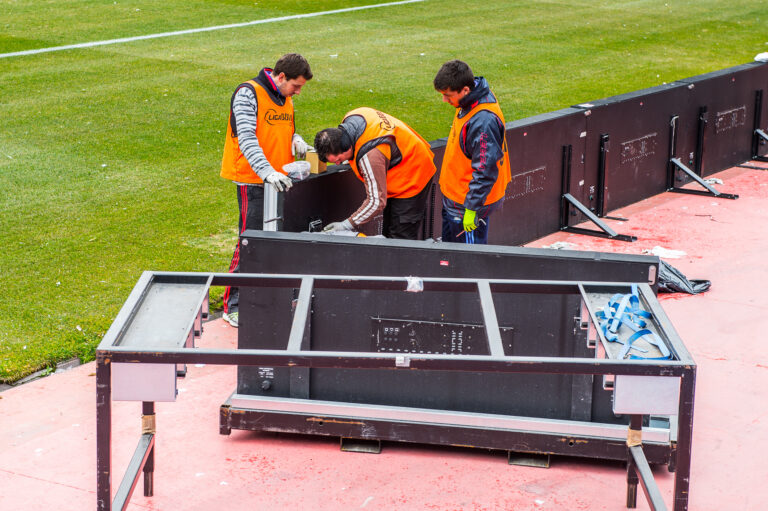When people think about “company culture,” a few things probably come to mind: ping pong tables in the break room, catered lunches on Fridays, and maybe even company-wide happy hours.
For employees across the country, culture in the workplace is one of the most openly-discussed topics. And over half of them value it more than their salary, according to a Glassdoor study.
But true company culture goes far beyond these stereotypical “perks.”
And it doesn’t just apply to salaried workers.
Why a Positive Corporate Culture Is Critical for a Flex Workforce
Since companies with salaried workers generally enjoy a stable workforce, they often have an easier time maintaining a strong culture. In contrast, flex workers – those who work hourly or on-demand – can be more challenging to manage and instill a sense of company culture for several reasons:
- The whole team is not present every day and therefore limits the comradery atmosphere
- Employees have a higher turnover rate which limits growth potential
- There are more opportunities for miscommunication
- There is not the organic loyalty that comes with a full time role
Despite these challenges, corporate culture plays a critical role in managing your flex workforce.
1. Increased morale and productivity
Especially for employees who may not be working towards a long-term future with your company, corporate culture can serve as a major source of day-to-day motivation.
When employees feel like they are part of something larger than themselves, they are more likely to be motivated and productive. A positive corporate culture can help to create a sense of community and belonging, fostering a spirit of collaboration and cooperation.
It can also lead to higher morale, as employees feel appreciated and valued.
The end result of this domino effect is a better customer experience. For example, hospitality workers who are proud to be a part of their team will be more compelled to go above and beyond for guests, leading to a better customer experience for your guests.
2. Improved communication
There are a few reasons why miscommunications and misunderstandings are more common in flex workforces.
First, employees in flex workforces are not always present in the office. This can lead to a lack of clarity about expectations of roles and confusion about who is responsible for what. Training is not often at the top of mind when it comes to onboarding hourly employees because that’s usually seen as a long-term investment.
The shorter tenure of flex employees can lead to a lack of understanding of company culture and how things work. And when each employee is working different schedules, it can be difficult for flex workers to build relationships with their colleagues when they are constantly rotating through different teams.
Since flex workforces see high turnover rates, there may also be a lack of institutional knowledge and continuity. This makes it difficult for managers and new employees to build trust with each other.
Companies with favorable cultures can navigate these challenges more effectively by creating a sense of community and welcomeness, as well as clear expectations for behavior and communication.
3. Attract and retain top talent
It costs far more to hire new employees than it does to retain existing ones. Retention-focused businesses know that attracting and keeping top talent is a major key to success.
By giving your flex workforce competitive hourly rates, flexible scheduling options, and professional development opportunities, you can make your company more attractive to top talent.
By maintaining a positive corporate culture, you can create an environment where flex workers feel appreciated and valued – increasing the likelihood that they will stick around for the long haul, take on more shifts, accommodate scheduling adjustments, etc etc. And employees who do leave your company for another opportunity will be more likely to recommend your business to others as a great place to work.

What a Workplace with a Positive Corporate Culture Looks Like
A workplace with a positive corporate culture is one where employees feel like they are part of something larger than themselves.
They feel appreciated and valued, and they have a sense of belonging. This type of workplace is characterized by:
- A clear set of values and expectations: Within every culture-oriented company, there is a set of values that guides the company’s decision-making and operations.
- A focus on employee development: Professional development means different things for different people. For some, it might involve opportunities to learn new skills or receive training on the latest software. For others, it might mean opportunities to grow into leadership positions. For flex workers, it’s about giving them the tools to grow their skills and experience – whether they continue with your company or take them elsewhere.
- A commitment to communication: A positive corporate culture fosters open and honest communication between managers and employees. This type of two-way communication builds trust and creates a more positive work environment.
- A spirit of collaboration and cooperation: The most innovative companies encourage their employees to work together towards a common goal.
- A culture of appreciation: Professional development opportunities and open communication aren’t enough. Flex employees need to know that the work they’re doing is valuable, and that they are being recognized for strong performance.
How to Create and Maintain Strong Corporate Culture with a Flex Workforce
The actual model or program that you use to build your flex workforce’s corporate culture will vary depending on the size and nature of your business.
But there are a few telltale signs that you’re on the right track:
- You’ve defined your company’s values and expectations, and you’re communicating them to your employees – all of your employees.
- You’re investing in your flex workforce’s professional development and providing opportunities for them to grow within the company.
- You have clear, consistent communication channels and use them to build trust with your entire disparate workforce.
- You’re fostering a spirit of collaboration and cooperation and encouraging your employees to work together towards a common goal.
- You’re showing your employees appreciation for their work by valuing their contributions and feedback.
Tips for Maintaining a Positive Corporate Culture
Maintaining a positive corporate culture is not a one-and-done task. It requires ongoing effort and commitment from everyone in the organization – from the CEO to the flex workers.
Here are a few tips to help you keep your corporate culture strong:
Encouraging Honest Employee Feedback
One way to keep your corporate culture positive is to ask for honest employee feedback. You can do this in several ways, such as:
- Asking for feedback in one-on-one meetings
- Conducting regular surveys to keep a pulse on employee mentality
- Encouraging employees to submit anonymous suggestions
- Making it clear that you’re open (and encouraged) to hearing both positive and negative feedback
Employee-Led Scheduling
Another way to engage your flex workforce is to give them some control over their schedules. Even if you are the one who ultimately approves the schedule, giving employees some say in how and when they work can help them feel empowered and appreciated.
And when flex workers feel empowered and appreciated, they’re more likely to be engaged and productive employees.
Team Building and Bonding Activities
Whether it’s a weekly meeting or a daily call with the whole team, make time for some activities, open-ended discussion, and fun. Getting to know your flex workers more personally can go a long way with building a good rapport.
You don’t have to plan an elaborate team-building retreat (although you can if you want to!). Sometimes, the simplest things – like starting each meeting with everyone sharing one personal achievement they accomplished the previous week – can make a big difference.
Using Tools That Make Communication Easier
Communication tools like Slack, Google Hangouts, and Microsoft Teams encourage team members to talk with one another, share information, and collaborate on projects. But that doesn’t mean non-office roles don’t deserve the same level of ease for communication. Push notifications, text messages, and emails can be your best friend (and theirs) when your team isn’t working behind a desk. Finding out what works best for your flex workforce is something that requires their feedback – don’t assume you know the best tool or their preferred way to communicate.
Working together towards a common goal is easier when everyone is on the same page.

Final Thoughts on the Role of Culture for Flex Workforces
Building and maintaining a positive culture takes effort, collaboration, and resources – but it’s worth it. Investing in your flex workforce’s professional development, encouraging feedback, and using tools that facilitate communication can develop a workplace that innovates, collaborates, and ultimately, succeeds.
